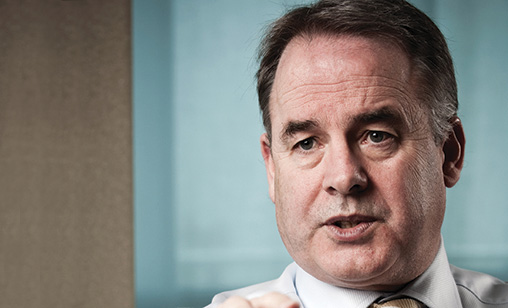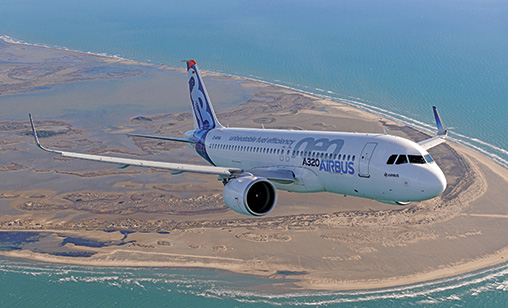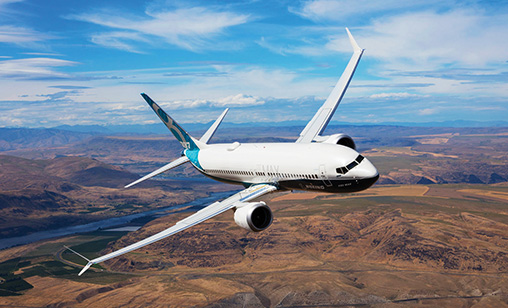Addendum
Etihad Aviation Group’s James Hogan moves on to finance
February 1st 2017
Etihad Aviation Group president and CEO, James Hogan, has announced he will leave the Abu Dhabi-headquartered airline and travel group for the investment world, along with the group’s CFO, James Rigney. Read More »
A global search has commenced to replace Hogan, who plans to leave the group in the second half of this year. Rigney also plans to depart from the company at an unspecified date this year.
 |
The Etihad Aviation Group board of directors announced the news on January 24 when they said Hogan “had first initiated the transition process last year with the formation in May of the Etihad Aviation Group, now a diversified global aviation and travel organization”.
Etihad Aviation Group chairman, H.E. Mohamed Mubarak Fadhel Al Mazrouei, said: “we are very grateful to James. In just ten years, he has overseen the growth of the company from a 22 aircraft regional carrier into a 120 aircraft global airline and aviation group, with seven equity partnerships which together serve more than 120 million guests every year.
“Under his leadership, the company has provided new opportunities for thousands of Emiratis and has been a critical element in the remarkable progress of Abu Dhabi and the UAE. We look forward to James’ continued association with Abu Dhabi in new ways.”
Priorities for the business, said H.E. Mazrouei, were continuing a company-wide strategic review to ensure success in a challenging market.
“We must ensure the airline is the right size and the right shape. We must continue to improve cost efficiency, productivity and revenue. We must progress and adjust our airline equity partnerships even as we remain committed to the strategy.”
Speaking in Dublin a day earlier, Hogan said five of the Etihad Aviation Group’s seven airline equity investments already were delivering a return. “However, we faced greater challenges with airberlin and with Alitalia,” he said.
“Both are operating in very competitive environments and need to address longstanding issues facing their businesses. I believe airberlin’s strategy is now on track and Alitalia is finalizing a business plan to address its issues.
“We are committed to our equity partner strategy. It delivers a huge amount to our business. Some of these airlines need to react to the market pressures they face, and we are supportive of that process.”
At press time, Thai Airways International (THAI) president, Charamporn Jotikasthira, said the airline’s investigation into reported bribes paid by Rolls-Royce to THAI staff between 1999 and 2005 was progressing. In the meantime, THAI is preparing to sign a governance agreement to ensure that any party conducting business with THAI will not engage in any bribery with the airline’s employees. |
Airbus overcomes supplier obstacles?
 |
 |
At the time it seemed like a mountain too high to climb. With serious supplier issues for both engines and cabin interiors equipment delaying deliveries out of Airbus for its A320neo and A350, the European manufacturer looked more than unlikely to reach its revised November 2016 target of 670 aircraft delivered for the year.
Little wonder then that the president of Airbus commercial aircraft, Fabrice Bregier, was happy to announce the company’s 2016 performance to the media last month.
The first half of the last year was “unusually difficult from a production perspective”, Bregier said, but the manufacturer managed to speed up its output by the end of the year after suppliers fixed some of their problems. “Last year was one in which we managed not only to achieve our objectives but to surpass them,” he said.
Airbus delivered a record 688 aircraft in 2016 compared with 635 in 2015; a result that exceeded the company’s expectations. The output numbers were lifted by a rush of deliveries – 111 – in December,
Over in Seattle, rival Boeing delivered 748 planes during the year.
Airbus executives played down concerns the industry is facing a downturn after a long-running buying spree by Asian and Middle East carriers.
Despite these concerns, both Boeing and Airbus are not fazed by the prospect of fewer orders in 2017.
Airbus booked 731 net orders in 2016. It beat rival Boeing, but the order book for the year was nearly a third lower than in 2015 when clients ordered 1,036 aircraft. In Seattle, Boeing confirmed orders for 668 planes in 2016, a decline of 13% over 2015’s net orders of 768 aircraft.
Airbus has a backlog of 6,874 planes, valued at $1,018 billion at list prices, to be delivered.
Boeing ended 2016 with orders to be delivered of more than 5,700 commercial aircraft. For both manufacturers, the planned deliveries are sufficient to keep their production lines busy for the next decade.
At an Airbus global web briefing last month, Bregier said Airbus expected to deliver more planes this year than in 2016, but would not be drawn on numbers. “We will continue to ramp up. As of today, we will be above 700 deliveries,” he said.
Added John Leahy, Airbus’ chief operating officer – customers: “Next year, we will increase production again. We are essentially sold out at this point, but that does not mean we can’t increase our production, and we will next year and the year after,” he said.
“We have to build what we already have orders for and not worry about getting new orders. I’m confident that we’ll have a new record in deliveries in 2017. That doesn’t mean that orders are going to be strong.”
Nevertheless, both plane makers were buoyed by sales to Iran late last year after sanctions against the country were lifted. Boeing and Airbus each received orders for 100 planes from Tehran, each deal estimated to be worth at least US$11 billion.
Airbus delivered its first plane to Iran, an A320, last month. Boeing does not expect to begin deliveries until 2018.
Among other contracts Airbus signed in December was a $7.8 billion order from Indian LCC, GoAir, for 72 A320neo passenger jets. Another Indian LCC, SpiceJet announced the purchase of 100 B737-8 Max aircraft in one of Boeing’s biggest orders from India.
As for the eternal question of the future of the A380, Airbus continues to stand by its very large aircraft. With sales almost non-existent – Boeing’s B747-8 Intercontinental is suffering a similar fate – there is no sign of a new engine version, the A380neo.
In the meantime, Emirates Airline, which has 89 A380s in its fleet and another 53 of the type on order, is deferring delivery of six A380s from 2017 to 2018 and postponing acceptance of another six from 2018 to 2019. Last July, Airbus announced a cut in the A380 production rate to one a month from 2018 to reflect reduced demand.
Bregier said Emirates continued to challenge it for an A380 upgrade. “We have studied the possible evolution of the A380neo aircraft and we came to the conclusion that the time was not yet there to launch it. To do that we would need to inject some development cost and we would need to have a better environment from the market perspective, and also a clear return on investment,” he said.
“Regarding Emirates, I am very grateful they are such a strong supporter of the A380 and that they are challenging us to say ‘we want to buy more, we want the new version, we will be your big customer’. I believe this is a key to the future success of the A380 and future versions of this aircraft.”
“We decided to keep what really made sense, which is to increase the seat count while keeping the big advantage of the A380, which is the quality as perceived by the passengers - the bars, the restrooms, the showers and all that. And this is what we are doing right now,” Brégier said. By Tom Ballantyne
| Turbo accidents drag down safety record Last year was a banner year for Asia-Pacific commercial airlines with no major accidents or fatalities. But the record was not exemplary for the region’s turboprop fleet, which had three major accidents in 2016 that took 74 lives. Worldwide in 2016, there seven major accidents and 207 lives lost at jet carriers – a loss rate of one major accident for every four million flights – and a reduction in accidents of almost 60%. However, western built commercial airline turboprop planes had five major accidents worldwide that took 80 lives in the same 12 months – a loss rate of one major accident per million flights. The director general of the Association of Asia-Pacific Airlines, Andrew Herdman, said the safety record of turboprops in Asia had markedly improved following a heightened focus on specific risk factors and common operational challenges. “The projected expansion of airlines in the Asia Pacific brings with it considerable challenges, including effective regulatory oversight that keeps pace with growth, recruitment and the training of skilled industry professionals,” he said. The International Civil Aviation Organisation (ICAO) has identified disparities in the implementation of safety standards and regulatory oversight worldwide, including Asia. “Governments have a responsibility to make the necessary commitments and investment in resources to ensure effective oversight in full compliance with agreed ICAO standards, or face the very real threat of international sanctions, which some countries have already experienced,” said Herdman. |